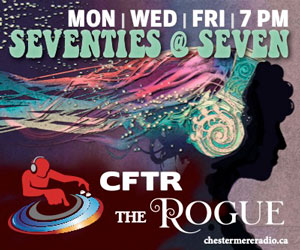It’s that time of year again, gentle reader. The days are getting shorter and the nights are getting longer. I even saw frost on my hop vines last week. It seems that summer has come to an end, and autumn has arrived like a blast of cold air from over the Rocky mountains.
Fortunately, your intrepid liquor reporter has a surefire method of shaking off the sadness at the end of another patio drinking season, and that method is the annual switching of the beers!
Yes, gentle reader, this is the time of year that your humble narrator puts away the summery wheat beers and pilsners, in favour of the dark stouts and porters more appropriate for the dim and dreary months of indoor drinking in Canada.
Novice boozers will often lump stouts and porters into the same category, as there is tremendous overlap between the two styles.
However, the beer snobs of the world will brook no arguments in this matter, considering stouts and porters as unique styles that should each be enjoyed for their own merits.
Way back in 18th century England, beers were classified by strength, loosely divided into the small, common, and stout categories, so any strong beer was referred to as a stout, regardless of the colour.
Up until WWI, a strong dark beer was known as “stout porter”, or “brown stout”, but the light coloured stouts made with pale malts fell out of favour with the boozing public, so stout beers became universally dark, as we know them today.
When British soldiers were sent off to battle in WWI, the strength of all English beers tumbled, as soldiers were paid a portion of their wages in beer, and they did not want the enlisted men to be too tipsy.
As beer strengths tumbled, the difference between stouts and porters were blurred, with many breweries using nearly identical recipes for both styles, and only slightly tweaking the water content for one or the other.
Fast-forward to the present day, and the average stout fan will reach for a Guinness, also known as the most popular stout beer in the world.
This may come as a surprise, but the Guinness Brewery produced both stouts and porters between 1759 and 1820, when declining market demand for porters caused the Guinness Brewery to switch their entire production line over to their famous Guinness Extra Stout.
Like any good beer snob, your humble narrator has made a pilgrimage to the Guinness Brewery in Dublin, and suckled the dark nectar directly from the brass teats at the onsite pub, which is definitely the best place to enjoy a tall dark pint.
Thanks to the craft beer revolution, it is easy to find both porters and stouts in abundance, with the differences being subtle, or sometimes nearly impossible to discern.
While there are great variations within the recognized styles, a broad-brush descriptor would be that stouts tend to contain notes of bitter coffee from the generous use of roasted malts, while porters tend to be slightly sweeter, due to use of more chocolate and caramel malts.
The Ribstone Creek Brewery in the tiny Albertan town of Edgerton produces the Old Man Winter Porter, which may just be my favourite porter.
With plenty of chocolate and coffee notes, the Old Man Winter Porter weighs in at 6.6% ABV, so it is considerably stronger than a Guinness Extra Stout, and has a caramel sweetness on the finish from the caramel malts grown right here in Alberta.
Closer to home, the Calgary-based Dandy Brewing Company produces the Dandy in the Underworld Oyster Stout, and has long been at the top of my go-to list for stout beers.
At only 5% ABV, it goes down just dandy, and pairs especially well with oysters or garlic sausage. Although the colouring is as dark as night, the blending of roasted malts with lighter malts results in a light to medium body on the tongue, and a highly sessionable beer that can be enjoyed all night.
You will find many other examples of stouts and porters in the aisles of your friendly neighbourhood booze merchant, or on tap at your favourite drinking establishment. Celebrate the arrival of autumn and the coming winter by putting down that light summer beer and come join us on the dark side!








